ABSTRACT
In the medical/pharmaceutical sciences, health and disease are understood through a biological perspective. However, this paradigm overlooks the emotional, social, and cultural understandings of health conditions. Using acne as a case study, this research aims to achieve a more holistic understanding of how acne affects a person’s self-perception, social relations, and behaviors. In particular, the research will reflect on the labor of acne. On a daily basis, hours of labor go into working on acne, with specialized autodidact techniques of cleaning, covering, analyzing and medicating. I chose acne as a case example since this is a condition I have many years of lived experience with, and the emotional side effects can be impactful when the acne is most severe. The research will thus include autoethnographic reflections, which will further be combined with digital ethnographic analysis of online communities centering around acne, with a particular focus on two Facebook groups. With this analysis I will try to understand what types of labor activities adult women (20–50 years old) with acne engage in, and what these activities reveal about our relationships to our bodies. Moreover, I will include theories from skin studies to frame an understanding of acne on a sociocultural level, as well as on medical phenomenology to understand the individual experience.
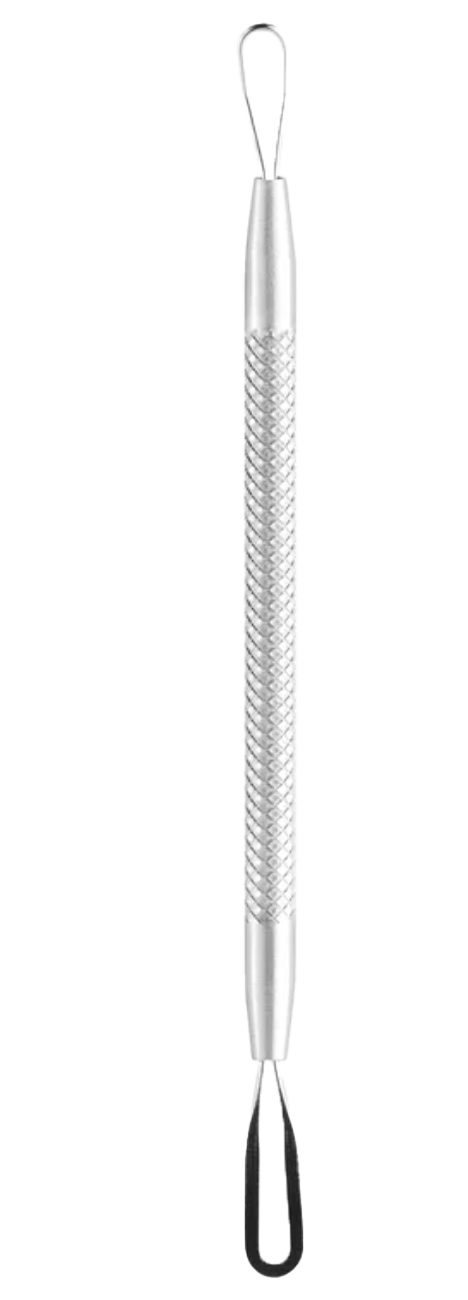
Overall, my findings show that the Facebook group members seek emotional support as well as advice from others with lived experience, which can provide an alternative or addition to the advice from skin specialists such as doctors. Members describe using many resources on their acne, both in terms of time, money, and emotional stress until they reach a state of burnout and estrangement from their skin. Interestingly, many mothers post on behalf of their teenage children, while no fathers were observed making these posts. This aligns with studies showing that women are responsible for most of the health work in families and points towards an invisible labor burden of mothers.
Jessica Simpson
Proactive commercial, 1995
“Clear skin is sexy skin. Skin you can kiss, skin you can touch, skin that looks good when you’re out shopping or up close to someone you love. What more could a girl ask for?”
INBETWEENNESS
Skin is characterized by an inherent “in-betweenness.” It is delicate and resilient, superficial and profound, it reveals and conceals (Lafrance 2018). Acne, a cohabitant of the skin, exists in the same in-between space. Acne calls attention to the age-old relationship of subject and object; you have acne, and you are your acne. It is an inseparable part of you and simultaneously something foreign, an uninvited guest residing in your face. Acne is associated with the liminal years between childhood and adulthood; 85–90% of teenagers will experience acne (Tanghetti et al. 2014). Puberty is a stage of passing, similar to acne. It is something to get through, to get over. However, for people who have acne in their teens, 65% will also experience it persisting into their 20s and 43% into their 30s (Bhate and Williams 2013). The transitional state thus becomes a permanent position.
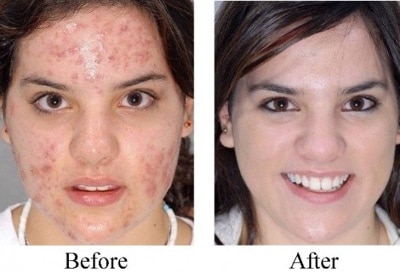
My friend and I are in the bathroom mirror, comparing the hair in our 13-year-old armpits. Hers are a soft layer, tiny and almost transparent. Mine are very few, 2 or 3, but thick and black. She presses out blackheads on the side of her nose and tells me she has a technique of pressing that doesn’t make her skin red. I don’t remember talking with anyone about how to press out acne pus since. The autodidact acne-popping techniques learned and perfected through years of hands-on experience. Assessing the tenderness, redness, firmness, gently poking.
The in-between status of acne skin concerns being both cosmetic as well as medical, and it is highly common while also being “deviant.” Foucault coined the term “the medical gaze” in The Birth of the Clinic, which describes the institutionalization of medical practices that happened throughout the 18th and 19th century in Europe (Foucault 1973). Importantly, Foucault’s work explores how Western medical practice became rooted in quantifiability and comparability with the rise of hospitals, and it in turn became possible to define a bodily “normality” and “abnormality” (Foucault 1973). It is important to note that when acne is extremely common, yet considered an aberrant state of skin, other structures beyond statistical regularity are shaping the biomedical perception of this condition.

The skin is a liminal space. It is a thin screen, one in which both the inner state of the body as well as the external societal discourses are projected onto (Lafrance 2018). An area of cultural studies, namely the field “skin studies,” is particularly occupied with skin’s entanglement in social, political, and cultural status (Lafrance 2018), and by extension society’s external projections of these statuses onto the skin. Acne is commonly used in pop culture, e.g., films, music videos, and TV shows as an indicator of someone unattractive, unpopular, or even a villain (Subrt and Wagner 2013). Examples of this include the leader of the hostile motorcycle gang Leo “Craterface” Balmundo in Grease, or the nerdy musician Dusty in the romantic comedy Just Friends, who gets rejected by his crush. In other films and TV shows, acne is seen on side characters that are portraying insecure and incompetent teens (Subrt and Wagner 2013). However, the stigmatization of acne is nothing new. Historically, acne has been considered an undesirable skin condition, and the efforts to treat acne are documented dating back to Ancient Greek and Egyptian times (Mahmood and Shipman 2017). Similarly, metaphors in language reflect the assumed morality, e.g., acne skin being categorized as “unclean skin,” thus relating it to bad hygiene. A study made at Harvard Medical School showed that 55.4% of participants believed that acne is caused by poor hygiene and 50% believed acne to be infectious (Kimball 2016). From the same study, 44.6% said they would be uncomfortable touching someone with acne, and 41% said they would be uncomfortable being seen with someone with acne in public.
The feminist writer Susan Sontag describes how morality has been associated with particular diseases in her book Illness as Metaphor (Sontag 1978). She discusses the cultural metaphors of disease and victim-blaming of people for their illness, using tuberculosis and cancer as case studies. According to Sontag, some illnesses are considered shameful, while others are not. For example, she argues that there is nothing shameful about a heart attack, which is a mechanical failure, whereas cancer is associated with morbidity, swelling tumors, and abnormal growths. Similarly, leukemia is a more pure form of cancer, whereas rectal cancer is more shameful. She points out the historical, and still contemporary, judgment of the morality of the diseased: “One gets the disease one deserves” (Sontag 1978). In this way, acne is one of those conditions associated with shame, taboo, and poor morals. Part of this idea originates in ancient medical practices, where skin conditions were seen as a manifestation of internal problems. Similarly, acne has been thought to be a side effect of an “unhealthy” diet, since fatty food was considered a main cause of oily skin in the beginning of the 1900s (Smith and Mann 2011). This cultural stigma and lingering misconceptions create a blaming and shameful discourse around acne skin, where individuals are likely to be considered unhealthy, unhygienic, and unattractive, causing exacerbated emotional distress (Davern and O’Donnell 2018).
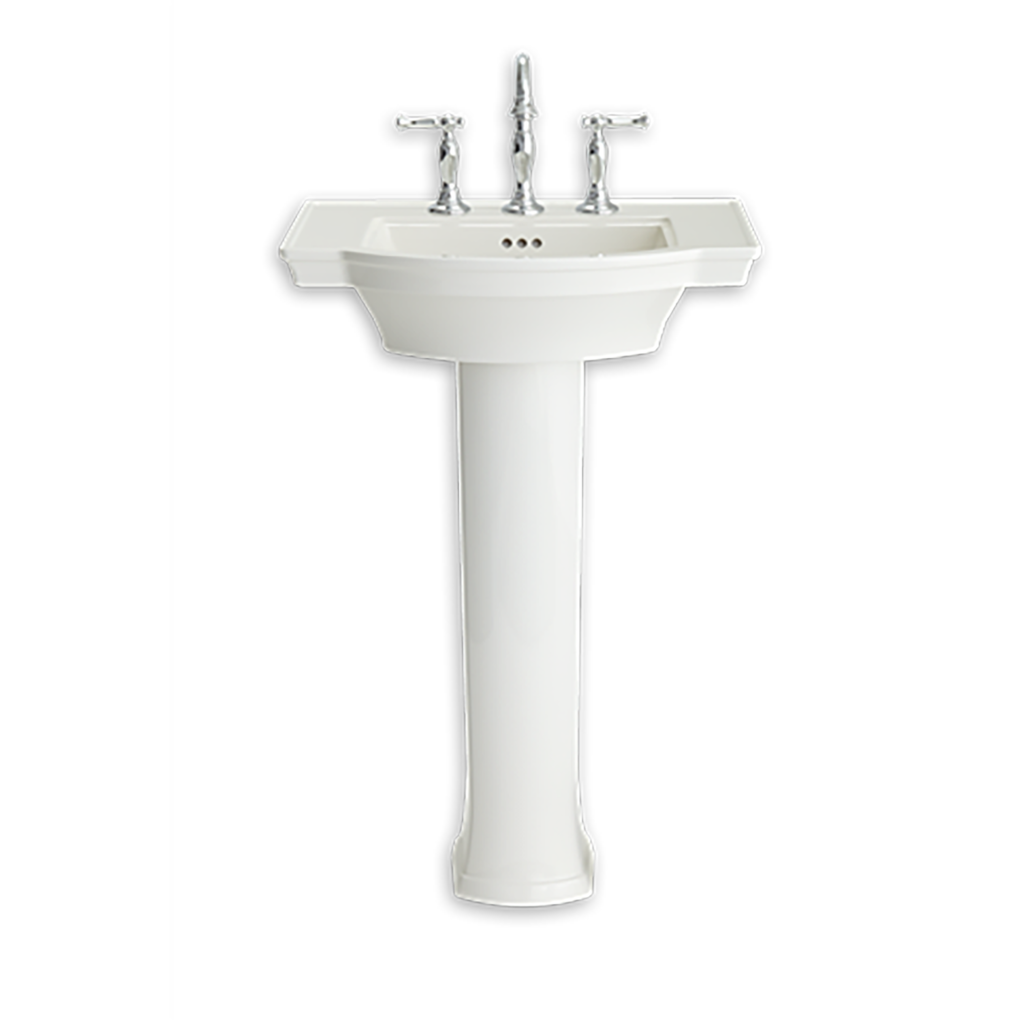
The idea of the skin displaying internal imbalance is still essential in many health paradigms, however less connected to the moral of an individual.
A BIO-EMOTIONAL MEMBRANE
According to the biomedical sciences, the skin condition Acne vulgaris occurs due to an overproduction of sebum, which causes the pores to clog and dirt to build up underneath the surface. 85% of people aged 11–30 years experience acne, and 15–20% experience it in a moderate-to-severe degree (Mahmood and Shipman 2017; Tan 2013). Due to its high prevalence, a large amount of medical research has attempted to determine the underlying causes of acne. Genetic predisposition is one evidence-based reason for acne development, but often the cause is undefined and multifactorial (Heng and Chew 2020).
While only being “skin deep,” the emotional side effects can be intense and impactful; adolescents with moderate/severe acne show a higher prevalence of anxiety, depression, and suicidal ideation, and lower social status and unemployment is reported within adults with untreated acne (Halvorsen et al. 2011). These psychological comorbidities are often overlooked in the medical treatment of acne, where the negative self-image may remain after the acne has disappeared.
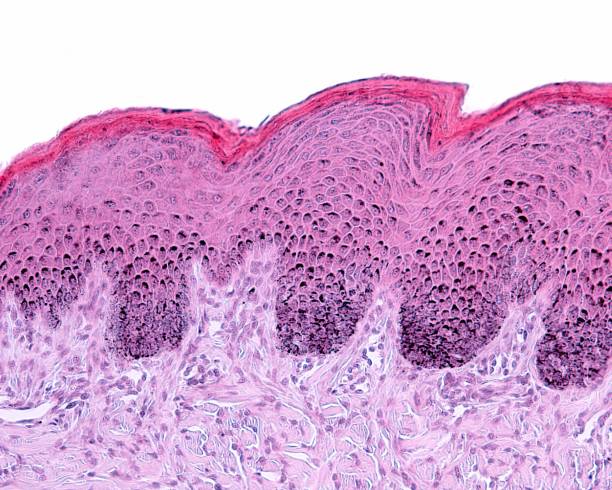
Note, that in this research, acne will be described as a skin condition, rather than a disease or illness, allowing fluidity and nuance in the definition.
You stop leaning into the hugs, with a stiff neck you keep your face away to avoid foundation smearing onto their shoulder, the fragile beige and brown cream armor. You avoid white clothes that makeup could stain too, avoid pinks and reds that accentuate the burning inflammation, shirts that show the skin of your back. You get up an hour early to drink lemon water and bone broth and spearmint tea, quietly sneaking to the kitchen to avoid your roommates seeing you uncovered. During the months of clindamycin and doxycycline and Accutane, of topical tretinoin, benzoyl peroxide, peels, and homeopathic drops, you document and achieve in the dark depths of your phone’s hidden folder. The hours in front of the bathroom mirror, finally deciding to cancel tonight’s plans.
SKIN STUDIES AND MEDICAL PHENOMENOLOGY
Unlike the vast amount of medical research on acne, almost no social science research focuses on this skin condition (Lafrance and Carey 2018). Acne studies, as opposed to the biomedical paradigm, reflect critically on acne, as it relates to embodiment and subjectivity in society. This field combines cultural studies, gender and sexuality studies, postcolonial studies, and sensory studies to rethink agency, experience, power, and technology related to acne skin (Lafrance and Carey 2018). Another growing area of inquiry within social sciences and cultural studies relates to medical phenomenology, which looks towards the individual, subjective experience of a bodily condition, and raises the questions “What is illness?”, “What is medicine?” and “How does/should my body feel?” (Fredrik Svenaeus 2001; Stanghellini 2011). In this thesis, I draw from both acne studies and medical phenomenology as an approach to uncovering what our emotions and behaviours around acne reveal about the relationship we have to our bodies. The wish is not to disregard biomedical explanations and approaches, but to enrich the understanding of the individual who lives with acne.
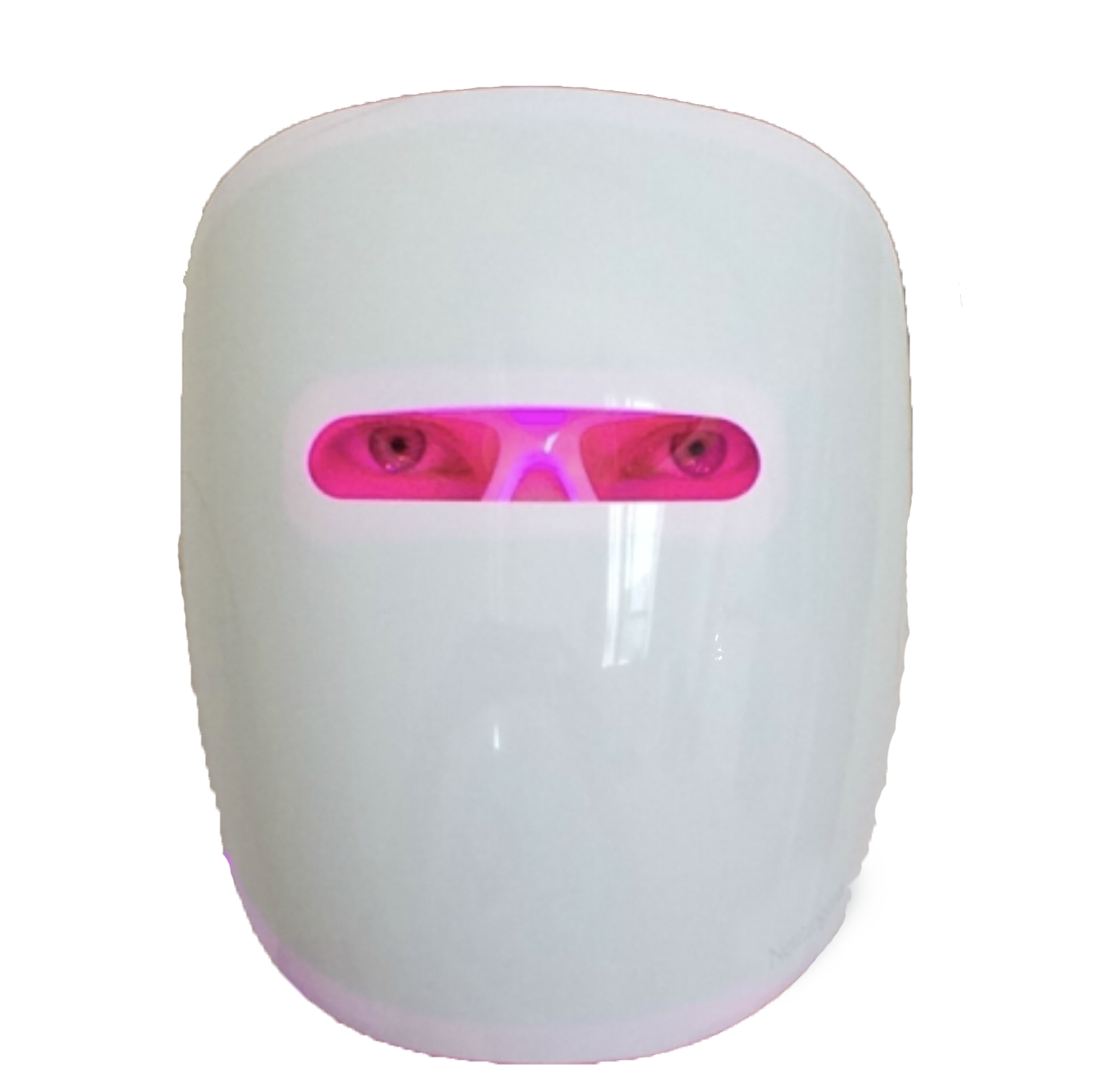
AUTO-LABOUR AND ACNE
In order to understand how we relate to the health and perception of our bodies, this research will particularly focus on the activities performed to get rid of acne. Skincare is booming. The heavy makeup that was trending in the 2010s has gone out of fashion and been replaced with “naturally” good-looking skin, meaning new techniques and even more expensive products (Atlanta 2023). This market caters to a customer base spanning from the Gen Alpha tweens, who prefer playing with skincare products instead of Barbies (Chkarboul 2024), to the young men from the “manosphere” on their lookmaxxing journeys (Notopoulos 2023). Since 2020, the global market for facial skincare has grown by 4–6 billion USD each year, and this tendency is predicted to continue in the coming years (Statista 2024).
The notion of skincare has the essence of meditation, relaxation, and appreciation. Skincare is associated with leisure, which is also defined as “free time” from work or duties; it is connected to a passiveness, an exemption from productivity. However, for individuals who are battling severe acne for years, the notion of care is unsuitable. Rather, interacting with the skin is perpetuating, time-consuming, highly skilled labour. The good skin labour is a 10-step routine with expensive serums and acids, sleeping on freshly washed silk pillowcases. Gently massaging hands on Skintok, dripping oils, and sending cute air kisses to the followers. The skincare “shelfie,” an exhibition of your uniquely personalized collection of peels and moisturizers, the chemical compounds that give a hopeful sense of control. The bad work is greasy nails pressing blackheads and yellow liquids, scratching the flaky crusts of the sores (Lafrance and Carey 2018). Thick layers of concealer that mix with sweat, swelled inflamed lumps, fatty pus exploded onto the mirror surface.

It's perhaps worthy to mention that this character is a phycopathic serial killer.
The concept of labour has always been a central topic in philosophy. For this thesis, I am inspired by several definitions of labour, amongst them Hannah Arendt’s. In The Human Condition, Arendt describes labour as the first of three human activities that make up vita activa (active life) (Arendt 1958). According to Arendt, labour is repetitive, cyclical activities that are part of our self-preservation and reproduction of the species: eating, drinking, sleeping, peeing, finding/cultivating food. It is thus part of a constant metabolism of the living body. However, in contemporary society, this type of labour is distorted and also includes activities of earning money we can then use to purchase food, pay for rent, etc. In relation to acne, labour can be considered the basis of the routines necessary to maintain the skin—the living skin that is constantly reacting to internal and external chemicals, radiation from the sun, endocrine hormonal secretion, humidity of the air, activity of unique microbiome compositions. The skin metabolizes and, in a desperate attempt to control the result of this process, we do labour. Whether skin labour is associated with biological survival is perhaps indirect, but as mentioned, increased levels of suicidal ideation and unemployment are seen amongst people with severe acne (Halvorsen et al. 2011). Furthermore, sexual and romantic relations are difficult for people with severe acne to pursue due to a lack of self-esteem (Kobusiewicz et al. 2022). The perpetuating efforts of people performing skin labour indicate that these routines are, at the very least, of emotional significance.
Alice Thomas
13th November 2023 in the Facebook group “Acne Warriors” (1)
Acne destroyed my self-confidence in every way possible. I genuinely had so much anxiety to see anyone or to even be seen. I cried so hard for so long. Avoided seeing friends and family, never allowed myself to have freedom or fun. Acne really can ruin your mental health, especially when you don’t see a light at the end of the tunnel. I never thought it was possible to heal my skin… I know how hard it is to look someone in the eye. The shame, the guilt & anxiety that comes with this.
I will also build my analysis around feminist labour theories, such as the notion of invisible labour, and connect to the double labour burden of women. The modern Western notion of work is considered to be paid activities that happen outside of the home. However, feminist labour theories critically rethink what activities are legitimized as work—in other words: what counts as labour, and why are some forms of labour devalued or invisible? (Daniels 1987; Crain et al. 2016). In The Second Shift: Working Parents and the Revolution at Home, professor of sociology and writer Arlie Russell Hochschild presents her research on inequality in the everyday workload between genders. As a lingering effect from times when women were responsible for the household and childcare, the women who now have full-time paid jobs still carry most of the full-time unpaid domestic labour (Hochschild 2012). Part of the invisible domestic labour women do is also having the responsibility for the family’s health. Women are generally responsible for the household’s health, including nutrition, hygiene, doctors’ appointments, and emotional well-being (Goodwin et al. 2005). As I will describe in the analysis, this invisible labour as a health manager for family members is also relevant in the case of acne.
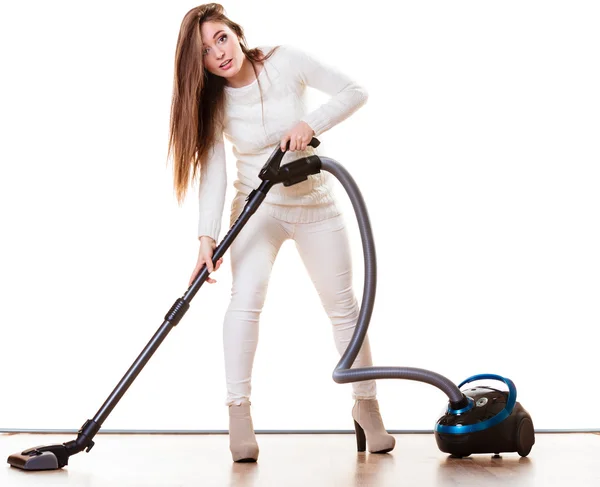
Finally, the notion of labour raises the question of who the skin workers are: the individuals with acne skin or the doctors, make-up artists, and nutritionists? In this thesis, I wish to rethink the hierarchy of medical and cosmetic practices. For this reason, people who get paid to provide advice to people with acne (e.g., dermatologists, cosmetologists, naturopaths) will here be described as “specialists” rather than “experts.” This is to acknowledge that these professionals are well-educated within particular health practices, but to abolish the idea that someone else is the expert of your body.
METHODOLOGY
Due to the vast amount of knowledge and content on acne that already is accessible, I will employ a digital ethnography method through observation on Facebook groups, Skintok, and “skinfluencers” on Instagram. Digital ethnography covers ethnographic methods that use digital tools to work ethnographically, or research digital environments with ethnographic methodologies, e.g., interviews, conversations, and observations. It can thus be both the tool and the content of the research (Pink et al. 2015). Netnography is a particular branch of digital ethnography, which is used to study online communities and cultures, specifically from social media and online forums (Kozinets 2015). As opposed to big data, which also uses information from online behaviour, netnography works qualitatively to decipher values, emotions, and ideas existing in these communities. For example, it both notices certain central terms within a community and uncovers what values these terms reflect (Kozinets 2013).
DIGITAL SKIN COMMUNITIES
In the context of acne and the internet, every online community platform is designed to target different demographics and creates different interaction behaviours. Some platforms like Reddit function as universal open forums to ask questions on any topic possible, while Acne.org targets people with acne and hence both has curated information by skin specialists and a forum that allows user interaction. Another example is Dermacupid, which is a dating app specifically developed for people with skin conditions, while apps like Discord are designed for people to self-initiate groups around a certain topic. Similarly, Facebook, TikTok, and Instagram are also designed in a manner that promotes certain online behaviours and content creation. Skin positivity influencers on TikTok and Instagram such as “izzierodgers,” “its_just_acne,” or “scarryacne_with_v” post close-up images of their skin with/without filters, and share acne memes as well as experiences with products.
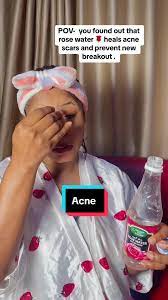
The content is highly visual due to the nature of TikTok and Instagram, and often accompanied by music and movement. It is for that reason quite entertaining, and the auto-scroll mechanism of the apps makes it easy to consume their content fast. Before/after images are very frequently used. This particular type of image montage is commonly used in marketing of acne treatments and serves as a binary comparison, where the improvement between the old “bad” and the new “good” is achieved through a product. However, skinfluencers also reclaim the before/after image, where the “new, improved version” of themselves may still have acne, but now dares to show it to the world. The skinfluencer stands forward, and the community shapes around them in the comment section. The community around these skinfluencers stands in contrast to Facebook groups. Instead of centering around one content creator, Facebook groups constitute a space of community where all members contribute, perhaps facilitated by an administrator. The content is less sensory-stimulating and mostly based on text, with a few bad-quality photos. While the content of the skinfluencers on Instagram and TikTok is intended to be public, participating in a closed Facebook group is a highly intimate environment. Some closed Facebook groups will only allow you to enter if you describe why you want to become a member, and the administrators can deny your request for admission. While the Facebook terminology “member” means that you are part of a group, the Instagram/TikTok term “follower” rather indicates that you are observing.
In this thesis, I will centre my research around the closed Facebook groups “Acne Warriors” (36,800 members) and “Hormonal Acne: Tips & Advice” (6,800 members). This will foremost be a gathering and categorization of posts, comments, and imagery that focus on different types of acne labour. These posts will work as testimonies of subjective, lived experiences, and will thus bring a medical phenomenological inflection to the concept of acne labour. For the privacy of the groups’ members, altered names will be used, but the date and the specific Facebook group will be used as reference. When I entered the groups, I posted about my research project and my personal experience with acne, but only received short comments from a few people agreeing with the relevance of the topic. Since these posts, I have not been interactive with the group members in my research; rather, I have observed for 8 months (July 2023–February 2024) and saved the posts I found surprising, powerful, or could relate to. These posts provided me with so much insight that I did not feel the need to ask for more information from the group members.

DEMOGRAPHICS
The design of digital platforms targets different demographics. I have chosen to focus on the two previously mentioned Facebook groups, in which the majority of members are adult women in the estimated age range of 20–55 years. This correlates with the biggest group of users on Facebook being millennials, older Gen Zs, and Gen Xs (Dixon 2023). My choice of researching this demographic has been influenced by my own position, being a millennial woman who has grown up with Facebook, and who has experienced acne in both the teens and throughout my 20s. Nonetheless, the research done for this thesis has been the first time I have engaged in any type of community sharing advice on acne.
Adult acne is burdensome and clinically under-recognized (Tanghetti et al. 2014). This condition is characterized by acne that persists from the teenage years into adulthood or by late onset, occurring for the first time in the 20s or later. It is significantly more common in women, being documented in 22% of women and less than 5% of men, and is most often due to hormonal imbalances and changes caused by contraceptives, giving birth, menopause, and various other hormonal factors (Dréno 2015). Adult female acne is more difficult to treat and should be approached with a different medical strategy than teenage acne. Surprisingly, adult acne has bigger emotional implications than teenage acne (Tanghetti et al. 2014). For these reasons, 20–55-year-old women are a relevant target demographic.
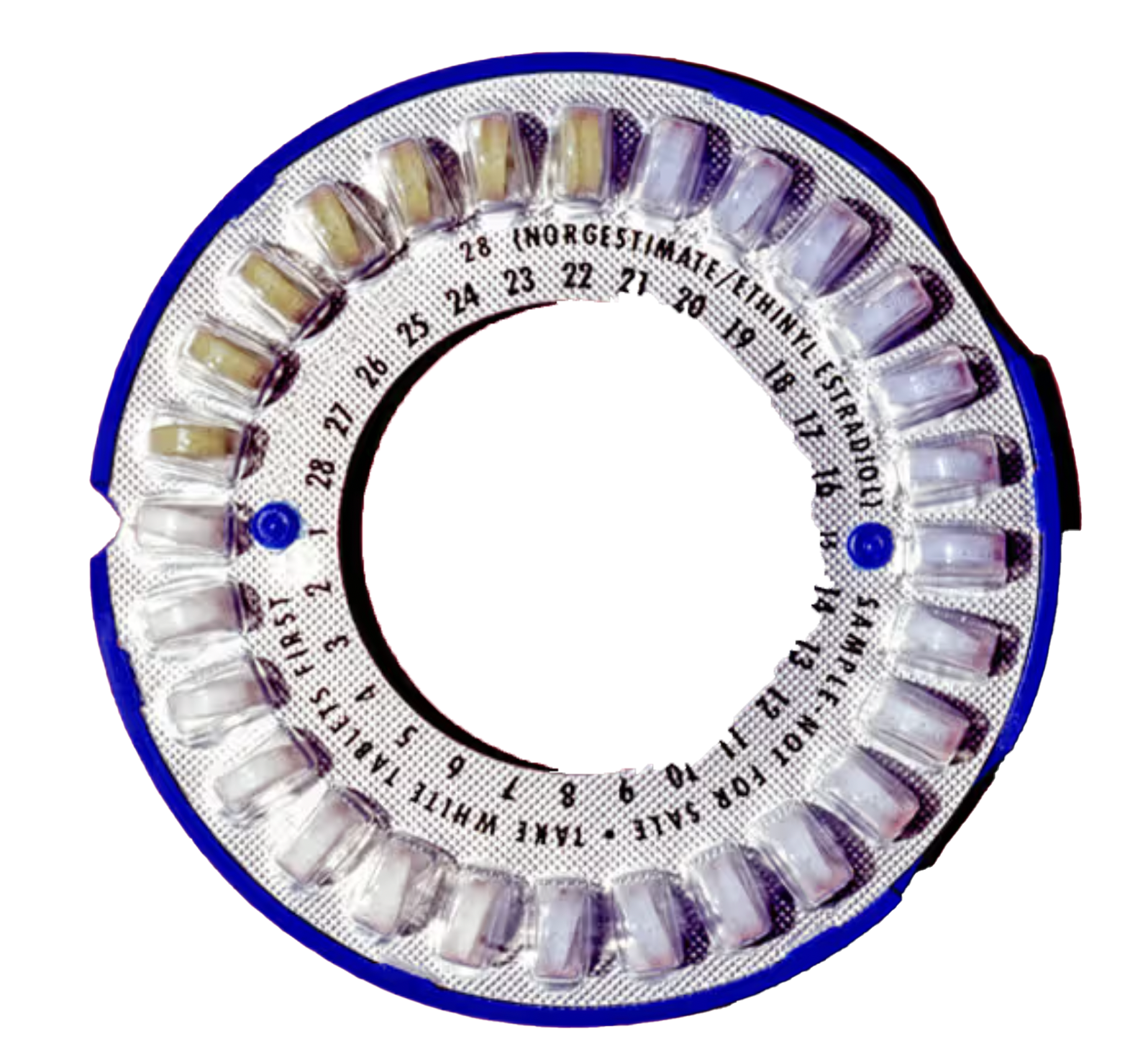
Birth control aka. "the pill" is a very common medication for women with acne.
LABOUR ANALYSIS
In this thesis, I do not wish to discuss the aesthetics of acne or beauty standards that typify existing work in the field. Instead, I will, with this analysis, try to understand what types of labour activities adult women (20–50 years old) with acne engage in, and what these activities reveal about our relationships to our bodies.
In the Facebook communities “Acne Warriors” and “Hormonal Acne: Tips & Advice”, it is apparent that acne is both an individual and collective experience, with shared emotional concerns and searches for routines that can minimize symptoms. The group members with acne skin are experimenting with treatments on their bodies through trial and error, and subsequently sharing their valuable knowledge. Some people are tired veterans; others experience the shock of a first-time severe breakout. A particular type of camaraderie exists — someone shares the exact same type of acne as you.
Acne Warriors
Group description (2)
Think of this group as both a personal acne diary, as well as your way to help change the world and the landscape of how acne is discussed and treated. Behind every strong
individual is a silent army of others holding them up. Acne is a physical condition with strong emotional implications; this group is our Acne Warrior community, where we can connect, share, learn, teach, and fully understand our skin, how it works, and what we can do about it.
The group description shows a wish to become more knowledgeable, and a trust that the personal, lived experiences of others are a valuable source to do so. Members generously share names of specialists and product recommendations, and invest time in replying to each other’s questions. Many posts have at least 10 comments, showing genuine engagement from the group members. Like other types of labour, specialized knowledge, techniques, tools, and time management/schedules are part of acne labour. Examples of this include specialized terms used in the posts, e.g., “AM/PM” describes the morning and evening routines of cleaning and medicating. Further examples include the term “actives” to describe active ingredients in cosmetic products, and “PIE” as an abbreviation for “post-inflammatory erythema,” which is a type of acne scar.
The group description shows a wish to become more knowledgeable, and a trust that the personal, lived experiences of others are a valuable source to do so. Members generously share names of specialists and product recommendations, and invest time in replying to each other’s questions. Many posts have at least 10 comments, showing genuine engagement from the group members. Like other types of labour, specialized knowledge, techniques, tools, and time management/schedules are part of acne labour. Examples of this include specialized terms used in the posts, e.g., “AM/PM” describes the morning and evening routines of cleaning and medicating. Further examples include the term “actives” to describe active ingredients in cosmetic products, and “PIE” as an abbreviation for “post-inflammatory erythema,” which is a type of acne scar.
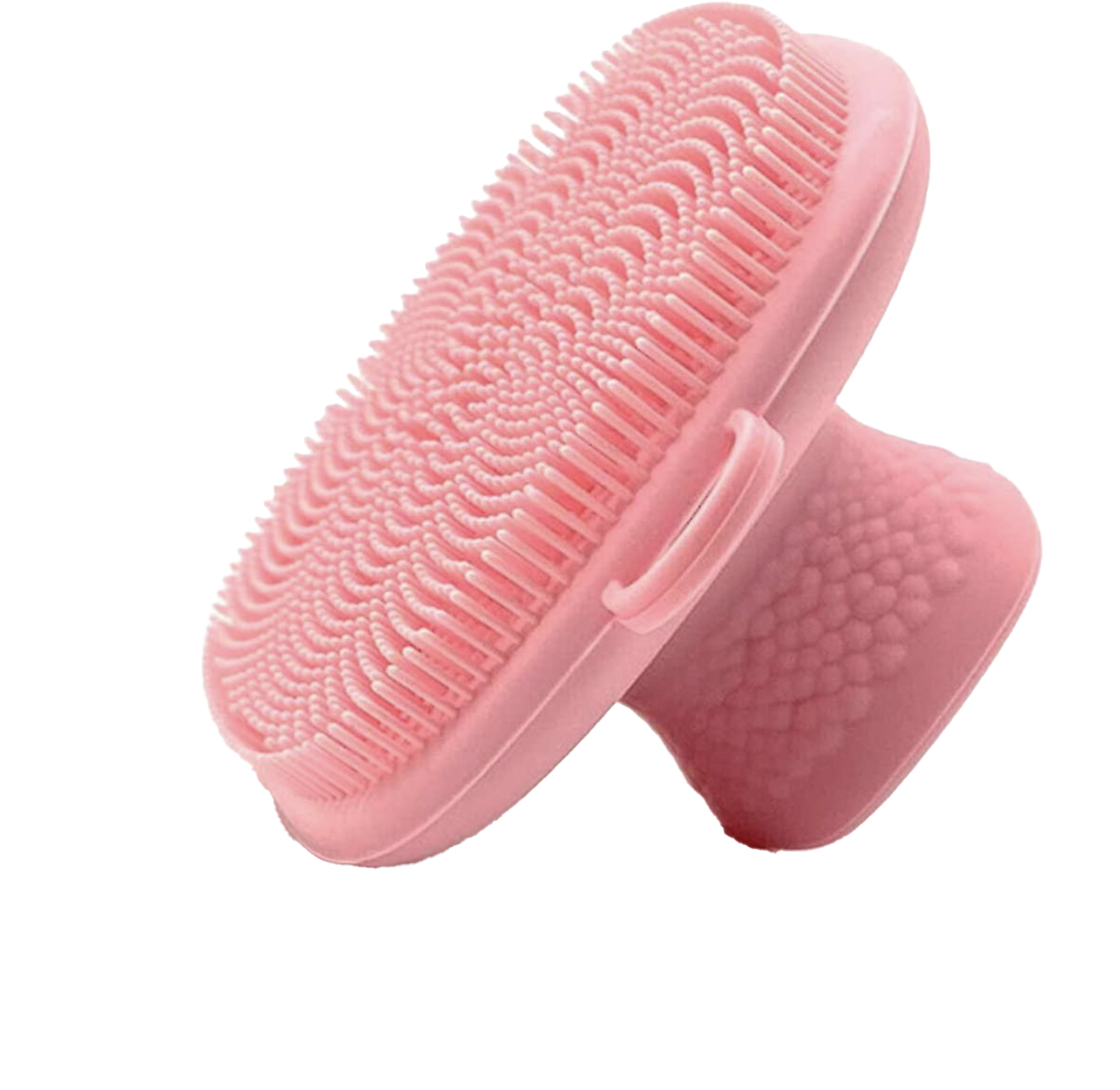
Similarly, certain treatment strategies that are commonly mentioned are accepted and known within the community, and often don’t require elaboration. For example, an imbalance in gut health can be a cause of acne, and drinking bone broth can, for some people, be beneficial for restoring gut health and healing acne scarring. New members might ask for explanations, but most frequently, specific questions will focus on product brands, frequency of use, dosage, and combinations with other treatment strategies.
Emily Miller
14th of December in Acne Warriors (3)
AM:
Panoxyl (every other day) or Cerave Foaming Cleaner
Prescription Azelaic Acid
Cerave AM moisturizer with SPF
PM:
Cerave Foaming Cleanser
Prescription Azelaic Acid
Prescription Adapalene
Cerave PM moisturizer
Lilly Yang
7th of February 2024 in Acne Warriors (4)
Hi everyone, I am new here! I rarely said this, but I need help. I've been suffering from acne for 20+ years and I just cant stand it anymore. I consulted a dermatologist and I feel so overwhelmed with the treatment choices he gave me. I cannot take Accutane. But he offers me topical, spironolactone or doxycycline. I have no idea what to choose. I am scared of bad effect on health of those treatments. I guess I am looking to hear about people's experiences with those treatments....
RESOURCES FOR LABOUR
Since acne is multifactorial and a variety of products and treatments exist to treat it, people who search for solutions are likely to sacrifice many resources:
Carrie Jones
Comment to post 27th November 2023 in Acne Warriors (5)
Most of us that suffer with acne want to target the issue from the surface, we get our hands on 1000 different products and spend so much money and time on the wrong things.
Time is here mentioned as a resource and can be important for several reasons. Firstly, untreated severe acne is very likely to cause scarring that can be difficult to treat (Chilicka et al. 2022). Moreover, an extended period of time with acne exacerbates the emotional side effects, and the sense of self-worth can take longer to rebuild after many years of negative self-perception. Often, group members will describe timelines of their acne journey as argumentation for how much they have struggled and how patient they have tried to be. Finally, preparing acne-friendly diets, driving to skin specialists, doing weekly peels, cleansing routines morning and night, and maintenance throughout the day adds up to many hours spent in everyday life. The quote above also points to the fact that skin is an economy. Many group members discuss how to receive treatment without/with limited insurance coverage, and the expenses of their skin.
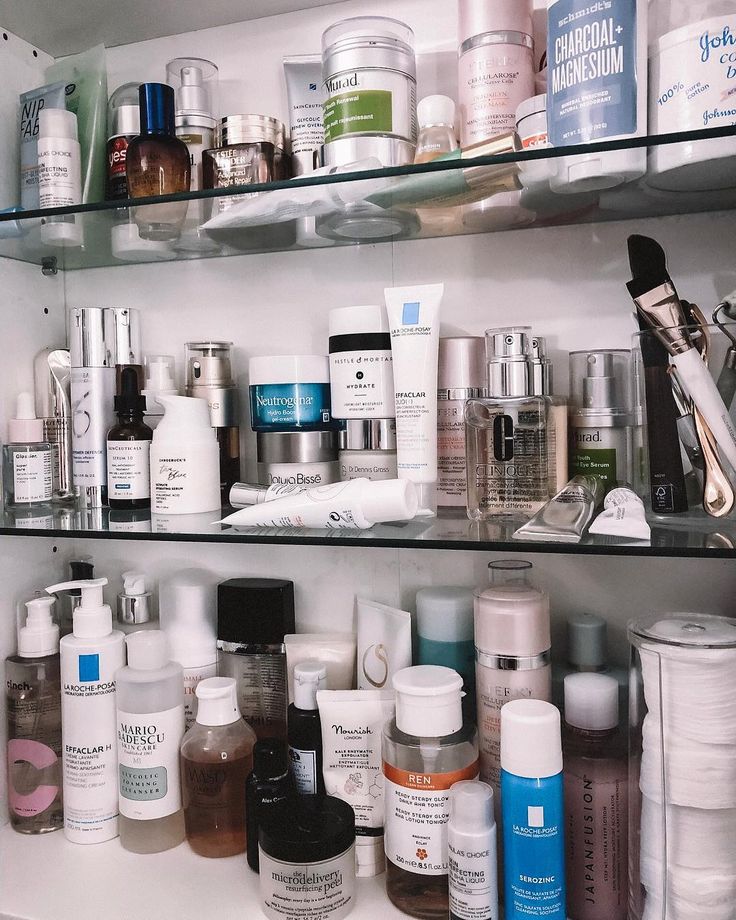
Morgan Daniels
9th December 2023 in Acne Warriors (6)
All these years have been a long and painful journey for me to find health again... I started reading books, research and studies, all the videos i could find on the subject, as well as
thousands of hours or self observation, noticing how my body reacts to certain foods, supplements etc. I spent 10-15k on various treatments and medications alone.
Reanna Brandon
16th of November 2023 in Hormonal Acne: Tips and Advice (7)
I have spent over $3000 and a year trying to heal internally with naturopaths and without birth control / other pills so with all do respect please spare the gut health / holistic healing route as I have tried that doing that for almost a year with no results.
In these groups, “good” skin – that is, skin without acne, scars, or wrinkles - is in some cases believed to be a commodity. The pharmaceutical and cosmetic industries can capitalize on individuals suffering from acne, who in desperation attempt to consume their way out of negative self-perception. Given the overwhelming number of products and treatments that might not work, people with acne become very dependent on certain products when they actually do improve the skin. Facebook group members show desperation when a particular product is discontinued. The following examples demonstrate how an individual’s sensitive acne skin is directly linked to the logistics and economy of the cosmetic industry. The product becomes elevated to a status of necessity:
Amber Ray
15th December Acne Warriors (8)
“Pacifica is discontinuing the Super Hydration Sleepover Mask! I use this every night as a moisturizer, so this is a HUGE loss.”
Yasmine Carlson
12th May 2023 in Acne Warriors (9)
Anyone knows if this product has been discontinued already? I can’t seem to find one anymore. It’s not the best moisturizer but this is the only moisturizer that worked for me…”
Access to medical knowledge and language can also be an important resource while navigating and taking charge of one’s own health. Even with some medical understanding, the ability to communicate with dermatologists and general practitioners, which for many are considered authorities, can be challenging. This speaks into the discourse of the medical gaze, which excludes the “patient” from making decisions about their health by positioning the doctor as the expert with the decision-making power (Foucault 1973). Several members describe being denied blood testing and being told that it’s not possible to find or heal the cause.
Holly Olsen
29th November 2023 in Hormonal Acne: Tips and Advice (10)
“Doctor denying to order (blood) tests. This is so frustrating. Just feel defeated”
Jill Michaels
16th November 2023 in Acne Warriors (11)
I have exhausted all treatment options with my GP… I found out that the urgent referral I had to dermatology, was declassified to routine because my symptoms aren't 'severe' enough.

DOCUMENTING AND SHARING THE PROCESS
A common element of acne labour is documentation of progress when using a new medication, product, diet or remedy. This is also used by many skin specialists. The goal of the documentations is to become aware of changes and rely on data rather than memory when assessing whether a treatment is helpful. Documentation can be through journaling or logging, which can clarify dosage and side effects. Self-made pictures of the skin are a commonly used documentation method. In the Facebook groups, members share images of their skin with several common purposes; 1) asking peers to access which type of acne it is to determine which strategy to use 2) to receive emotional support 3) to motivate others with improvement they have experienced. Images are taken with a smartphone, from angles that reveal it is a selfie. Often the lighting is poor quality, and the background shows a private setting e.g. a bedroom, a bathroom or a car. In several images, parts of the face have been obscured to create anonymity. Members will sometimes be apologetic and often insecure about sharing images:

Camilla Martinez
17th December 2023 in Acne Warriors (12)
Hello everyone, hoping this kind of post is allowed here. It’s taken a lot for me to post this picture of my skin, but I’m so desperate for some advice.
Lauren Cook
18th December 2023 in Acne Warriors (13)
I’m honestly so embarrassed to post this but recently like within the last couple months I started breaking out on my neck & it’s hard cystic acne.
Lisa McGill
23th of November 2023 in Hormonal Acne: Tips and Advice (14)
Pls don’t judge I know its hard to look at but I need tips.
These testimonies tend to show a sense of embarrassment, revealing that the self-worth can make one feel too unworthy for even a group created for the particular purpose of sharing. Nevertheless, to share images is a highly intimate act, and individuals are trying to show the most raw and unfiltered reality, which members trust with the peers in the closed Facebook groups. The images moreover reveal how different acne can look. However, the documented images are also used for showing good experiences with specific treatments and motivating peers.
Molly Polchinski
13th November 2023 in Acne Warriors (15)
This is my progress so far and I can’t believe it ! I still have a long ways to go, but I’m happy with the results so far.
Madison Wu
1st December 2023 in Hormonal Acne: Tips and Advice (16)
I’ve suffered from horrible acne my entire life since I was about 12 yrs old, I’m now 30. I am over the moon ecstatic! I never in my life thought I’d have clear skin. Now I just need to focus on healing my scarring.
NAVIGATING SOCIAL STIGMA
The support practices of the Facebook communities deals with more than only product – and treatment recommendation; it is also a place of sharing experiences of emotional hardship when encountering stigma from your social environments. This social stigma can come from both partners, family and strangers.
Sofia Diaz
27th November 2023 in Acne Warriors (17)
Today in the car my mom says: “Oh girl, your face broke out.”
No one understands how acne makes you so self conscious. How ugly it makes you feel. I told her that I know when I have a break out so I don’t need to be reminded or have it pointed out.

Michelle Christy
20th November 2023 in Acne Warriors (18)
My boyfriend, who has gorgeous, flawless skin, tells me that I use too many products on my face… I don't like having a partner that is so critical about my skincare when I have struggled with it for 18 years!!!
Lucy Johnson
18th of November 2023 in Acne Warriors (19)
Whenever i look at ppl faces i question myself am i only the cursed one coz literally i cant find anyone with bad acne around me. I am ashamed to do pick ups at the school i would literally wear glasses even when it’s pouring down to hide my face somehow
These examples illustrate victim-blaming behaviour around acne, where people with no experience with acne assume that the skin condition is self-inflicted. Several people describe how their dating life stopped and how they are extremely sensitive to comments from their partner. While the previous posts reveal the community as a place for emotional outlet, the following posts ask for specific advice on how to navigate emotional distress:
Rachel Zhu
26th October 2023 in Hormonal Acne: Tips and Advice (20)
Any tips for improving self esteem with acne? Sometimes I accept it and am gentle with myself, and sometimes I tell myself I am ugly because of it. I start to compare myself to others with clear skin, etc. Right now I am feeling quite insecure.
April Adams
20th October 2023 in Acne Warriors (21)
Does anyone else use filters to cover up acne or editing apps to feel better about themselves
I do it often because I feel awful of not confident about how my acne shows
Rosy Nguyen
30th of January 2024 in Hormonal Acne: Tips & Advice (22)
How do you guys cope with dating and cystic acne? My acne has gotten really really bad since the start of my relationship, and it’s long distance, he’s been here multiple times so he knows I have acne but in the past month it’s gotten bad bad, im really scared for him to see it - as it is when he is he here I hide my face with my hair, makeup, and hats. It’s exhausting. My boyfriend is very fit, very stereotypically good looking, everyone’s always saying attractive he is, and I constantly feel like he’s going to cheat on me because he could get so many other girls than me:/ I feel like he’s extremely out of my league. I’ve been cheated on in all my relationships badly, which I don’t think has helped, I always thought my looks were partially to blame. Ive communicated to him how I feel, how horrible my skin issue is for me, and he doesn’t seem to care but I can’t imagine how:( I constantly obsess over how I think he’s going to leave me over it and how I don’t want him to see me:/
An emotional support network can be of particular importance when undergoing certain treatments. In example, low risk but high impact side-effects for isotretinion, which is the most efficient clinically proven acne medication, is depression and psychosis (Pile and Sadiq 2023). Several posts are from group members, who have struggled with mental health issues and are concerned about starting isotretinoin. Many individuals describe feeling lonely, and missing support from their surroundings. Giving and receiving support is a central reason for the members to engage in the Facebook community:
Zoey Keith
13th November 2023 in Acne Warriors (23)
I just want to let anyone who reads this or needs to hear this that you’re not alone. Acne can make you feel so freaking lonely, make you feel less than, and so uncomfortable being in your own skin. I’m so beyond grateful for this community, and I know we’re all just trying so hard to heal... in more ways than one. And we will !!!!
MOTHERING THE SKIN
Acne labour is not restricted to the person who has acne. Women’s roles as the main health managers and caretakers in families is very apparent in the Facebook groups. In particular, mothers write to seek advice to support the treatment of their teenage children struggling with acne. Some express concern about the children starting medication at a young age:
Maria Momsen
2nd of February 2024 in Acne Warriors (27)
My 14 yo son just started accutane last night. We've tried everything... Doxy, creams, washes etc… My son does suffer from some depression so we are keeping a close eye on that... But what he's most concerned about is he is a very active, highly competitive swimmer and runs track. He's worried about his growth and the meds affecting him. He's obviously in the middle of some big puberty growth spurts and as much as he wants his face clear he doesn't want to affect his growth and athletics.

Kelly Richard
5th October 2023 in Acne Warriors (24)
This is my 16 year old son. He’s been declined dermatology referral due to lack of capacity - he’s had problems with his thyroid gland and has been prescribed various antibiotics and topical creams over a four year period.
Taylor Lee
15th of December 2023 in Acne Warriors (25)
Trying to help my daughter - we have been on this journey since she was 10 - she is now 13.5… The poor child has probably had over 1000 extractions in her life… My beautiful munchkin!
These mothers are deeply invested in the health of their children and see it as their role to navigate the treatments. Several other group members describe how they try to complement their children and protect their self-worth. Acne can thus be considered an intergenerational condition; it can both be genetically inherited, but it also connects the mother and child through the mother’s role as a health manager. This responsibility and labour are part of the double burden previously described, and a gendered labour that is passed on and reproduced by each generation of women. In an interview conducted as preliminary research for this thesis, findings were completely aligned with this. Henlez A/S, which is a biotech company developing medication for treatment of Acne vulgaris and the skin condition Hidradenitis suppurativa, use Facebook communities to understand their potential users better. The research of Henlez in Facebook groups similarly showed that the vast majority of members were women, and moreover women writing for advice in the groups on behalf of their male partners. A few examples of this are also seen in Acne Warriors:
Ann Smith
30th of January 2024 in Acne Warriors (28)
Hello everyone! My beautiful fiancé has been struggling with his acne for the longest. He currently uses panoxyl, and this cream is believe it's hydrocortisone? All of these pimples are filled with blood, and cannot be popped, or they just come right back. His acne makes him very insecure, and I was hoping one of you could suggest something to help him.
BURNOUT
The labour process of acne is however not as repetitive as a morning/evening routine. There is not one cure for acne; members of the Facebook groups synthesize their personalized skin labour routine using strategies and techniques from several different health practices. The most widespread emotion communicated is frustration of not knowing which treatment/product to work with:
Maddy Lloyd
23rd of January 2024 in Acne Warriors (29)
What extreme things do you do to try and reduce your acne? This is mine and I have to do it or my acne gets worse: never use a towel more than twice, fresh PJs every night, fresh bra daily, don’t touch my face, no massages, change my pillow cases very frequently, wash sweat off ASAP, I take zinc and vitamin c, avoid hair on my face, tie my hair back, avoid sun cream to avoid the sun, only wash once a day with cleanser but also have a second shower to “rinse”. Was told cleanser twice a day isn’t good for the skin. I’m now going to stop diary and decrease sugar.
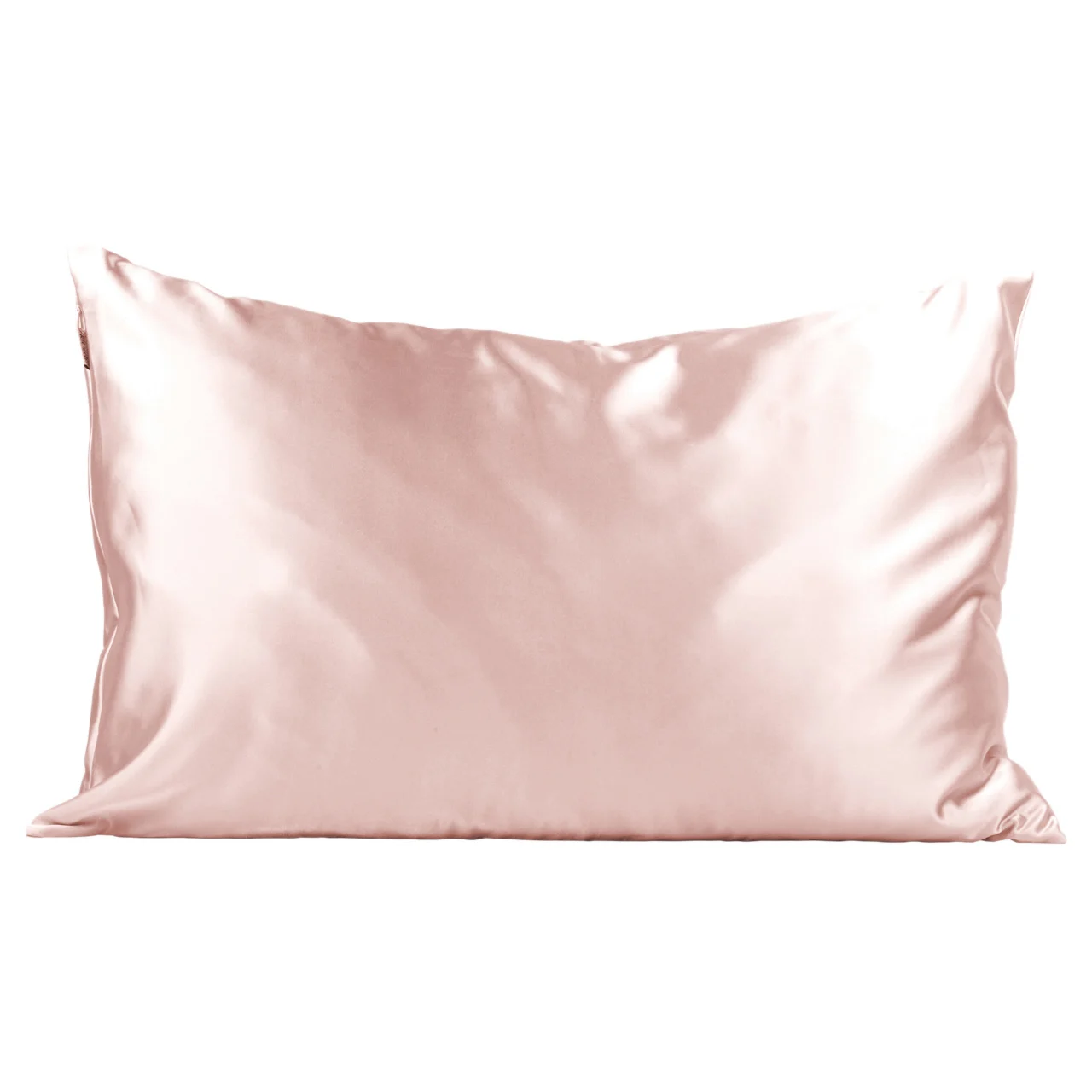
This is one of many examples showing a feeling of burnout after many years of doing acne labour without finding a simple treatment that works. “I have tried everything… nothing is working, I don’t know what to do anymore” is a reoccurring narrative. The lack of control and understanding of the body despite the many resources people use result in a sense of hopelessness and estrangement from oneself.
Nelly Hanson
20th October 2023 in Acne Warriors (30)
I do everything, I’ve had this since I was 17. I wash my face twice a day with two different face washes (one organic and gentle to remove previous products, one with strong salicylic acid to cleanse pores). I use BHA, retinol, oil-free moisturizer. I’ve used benzoyl peroxide and glycolic acid in the past. I’ve used literally everything. I sleep on a fresh clean pillow case every night, I’m constantly doing laundry. I don’t wear makeup. I don’t consume animal products, I’m not on any medication or birth control, I drink plenty of water, I don’t eat much
sugar. I sleep a LOT. I’m consumed with my skin. I have a derm appointment in two weeks.
…
I really really need help, I’m so depressed. I never leave the house. I feel like a monster.
CONCLUSION
This research began as a wish to enrich my biomedical background as a biochemist and pharmaceutical engineer, to understand how health conditions affect self-perception, social relations and behaviours. I chose to work with acne as a case study, since this is a condition that I have more than 15 years of lived experience with. The foundation of the research is the field of medical phenomenology, which looks towards the individual, subjective experience of a bodily condition, and raises the questions “what is illness” and “how does/should my body feel”. I quickly became occupied with the perpetuating labour people with moderate-to-severe acne do on a daily basis. I build my analysis around Hannah Arendt’s definition of labour, which she defines as repetitive, cyclical activities that are part of our self-preservation and reproduction of the species. Additionally, I included feminist labour theories on invisible labour and the double labour burden of women.

In the initial research phase I was looking at several types of online communities, but finally decided to focus my analysis on the specific demographic; 20–50-year-old women in the Facebook groups “Acne Warriors” and “Hormonal Acne: Tips & Advice”. Many of the posts in these communities resonated with me, and moreover I found it important to call attention to the complexities of adult female acne. For 8 months I read and saved posts, while noticing trends and tendencies. I used digital ethnography methodology to understand the values and discourses of the Facebook communities and ordered my findings in the 5 main categories relating to skin labour: Resources for labour, documenting and sharing the process, navigating social stigma, mothering the skin and burnout. Not surprisingly, the group members were clearly impacted by their acne skin. Members describe using many resources on their acne, both in terms of time, money, and emotional stress until they reach a state of burnout and estrangement from their skin. In addition, many group members express negative self-perception and social anxiety because of their acne, and the Facebook communities functioning as an emotional outlet. There is a trust of the lived experiences of other members, which can provide an alternative or addition to the advice from skin specialists such as doctors. Interestingly, many mothers post on behalf of their teenage children, while I in the course of my research saw no fathers posting on behalf of their children in the groups. This aligns with studies showing that women are responsible for most of the health work in families and point towards an invisible labour burden of mothers.
Further research would compare the Facebook group content with a more in-depth analysis of Instagram/TikTok content, for an understanding of acne in a younger demographic. It would moreover be interesting to analyse the importance of knowledge-sharing and support in a (digital) group environment, and if these communities improve therapeutic outcomes. The process has been a big learning, and I am curious to explore how the methodology of combining digital ethnography, medical phenomenology and labour theory can be applied to understand other health conditions.
References
Arendt, Hanne. 1958. The Human Condition. University of Chicago Press.
Atlanta, Ellen. 2023. “‘Not Ugly, Just Poor’: How the Beauty Industry Is Widening the Class
Divide.” Dazed Beauty Magazine, October 4, 2023.
Bhate, K, and H C Williams. 2013. “Epidemiology of Acne Vulgaris.” Br J Dermatology 168
(3): 474–85.
Chilicka, Karolina, Monika Rusztowicz, Renata Szyguła, and Danuta Nowicka. 2022. “Methods
for the Improvement of Acne Scars Used in Dermatology and Cosmetology: A Review.”
Journal of Clinical Medicine. MDPI. https://doi.org/10.3390/jcm11102744.
Chkarboul, Christina. 2024. “Gen Alpha Goes to Sephora.” Daily Trojan, February 12, 2024.
Crain, Marion, Winifred Poster, Miriam Cherry, and Arlie Russell Hochschild. 2016. Invisible
Labor - Hidden Work in the Contemporary World. 1st ed. University of California Press.
Daniels, Arlene Kaplan. 1987. “Invisible Work.” Social Problems, December.
Davern, Jamie, and Aisling T. O’Donnell. 2018. “Stigma Predicts Health-Related Quality of Life
Impairment, Psychological Distress, and Somatic Symptoms in Acne Sufferers.” PLoS
ONE 13 (9). https://doi.org/10.1371/journal.pone.0205009.
Dixon, Stacy Jo. 2023. “Distribution of Facebook Users Worldwide as of January 2023, by Age
and Gender.”
Dréno, B. 2015. “Treatment of Adult Female Acne: A New Challenge.” Journal of the European
Academy of Dermatology and Venereology. John Wiley and Sons Inc.
https://doi.org/10.1111/JDV.13188.
Foucault, Michel. 1973. “The Birth of the Clinic: An Archaeology of Medical Perception.”
Fredrik Svenaeus. 2001. “The Phenomenology of Health and Illness.” Handbook of
Phenomenology and Medicine (Chapter), 87–108.
Goodwin, Paula Y, Dean A Garrett, Osman Galal, Paula Y ; Goodwin, and Dean A ; Garrett.
2005. “Women and Family Health: The Role of Mothers in Promoting Family and Child
Health.” International Journal of Global Health and Health Disparities 4 (1): 30–42.
https://scholarworks.uni.edu/ijghhdAvailableat:https://scholarworks.uni.edu/ijghhd/vol4/iss
1/4.
Halvorsen, Jon A., Robert S. Stern, Florence Dalgard, Magne Thoresen, Espen Bjertness, and
Lars Lien. 2011. “Suicidal Ideation, Mental Health Problems, and Social Impairment Are
Increased in Adolescents with Acne: A Population-Based Study.” Journal of Investigative
Dermatology 131 (2): 363–70. https://doi.org/10.1038/jid.2010.264.
Heng, Anna Hwee Sing, and Fook Tim Chew. 2020. “Systematic Review of the Epidemiology of
Acne Vulgaris.” Scientific Reports 10 (1). https://doi.org/10.1038/s41598-020-62715-3.
Hochschild, Arlie Russel. 2012. The Second Shift: Working Parents and the Revolution at Home.
Edited by Anne Machung. 3rd ed.
Kimball, Alexa Boer. 2016. “Misconceptions Lead to Negative Perceptions of Acne.” American
Academy of Dermatology, 2016.
Kobusiewicz, Aleksandra, Lucia Tomas-Aragones, Servando E. Marron, and Anna Zalewska-
Janowska. 2022. “Body Dysmorphic Disorder in Patients with Acne: Treatment
Challenges.” Postepy Dermatologii i Alergologii. Termedia Publishing House Ltd.
https://doi.org/10.5114/ADA.2022.113616.
Kozinets, Robert V. 2015. Netnography. Edited by Mila Steele. 2nd ed. SAGE.
Kozinets, Robert V. 2013. “Netnography: Social Media for Cultural Understanding.” MSI
Immersion Conference.
Lafrance, Marc. 2018. “Skin Studies: Past, Present and Future.” Body and Society 24 (1–2): 3–
32. https://doi.org/10.1177/1357034X18763065.
Lafrance, Marc, and R. Scott Carey. 2018. “Skin Work: Understanding the Embodied
Experience of Acne.” Body and Society 24 (1–2): 55–87.
https://doi.org/10.1177/1357034X18760177.
Mahmood, N. F., and A. R. Shipman. 2017. “The Age-Old Problem of Acne.” International
Journal of Women’s Dermatology 3 (2): 71–76. https://doi.org/10.1016/j.ijwd.2016.11.002.
Notopoulos, Katie. 2023. “‘Looksmaxxing’ Is the New TikTok Trend for Young Men Who Want
to Be Hot.” Business Insider, November 8, 2023.
Pink, Sarah, Heather Horst, John Postill, Larissa Hjorth, Tania Lewis, and Jo Tacchi. 2015.
Digital Ethnography: Principles and Practices. SAGE Publications.
Smith, R, and N Mann. 2011. Nutrition and Skin Lessons for Anti-Aging, Beauty and Healthy
Skin. 1st ed. Springer Science.
Stanghellini, Giovanni. 2011. “Clinical Phenomenology: A Method for Care?” Philosophy,
Psychiatry and Psychology 18 (1): 25–29. https://doi.org/10.1353/ppp.2011.0011.
Statista. 2024. “Skincare Market Revenue.”
Subrt, Adrian P, and Richard F Wagner. 2013. “Comparative Depictions of Acne Vulgaris in
Movies and in Animated Television Cartoons.” Rev Med Cine. Vol. 9.
Sontag, Susan. 1978. Illness as Metaphor. New York: Farrar, Straus and Giroux.
Tan, JKL, Jones E, Allen E, Pripotnev S, Raza A, Wolfe B. 2013. “Evaluation of Essential
Clinical Components and Features of Current Acne Global Grading Scales.” American
Academic Dermatology 69 (5): 754–61.
Tanghetti, Emil A, Ariane K Kawata, Selena R Daniels, Karen Yeomans, Caroline T Burk, and
Valerie D Callender. 2014. “Understanding the Burden of Adult Female Acne.” J Clin
Aesthet Dermatol. Vol. 7.